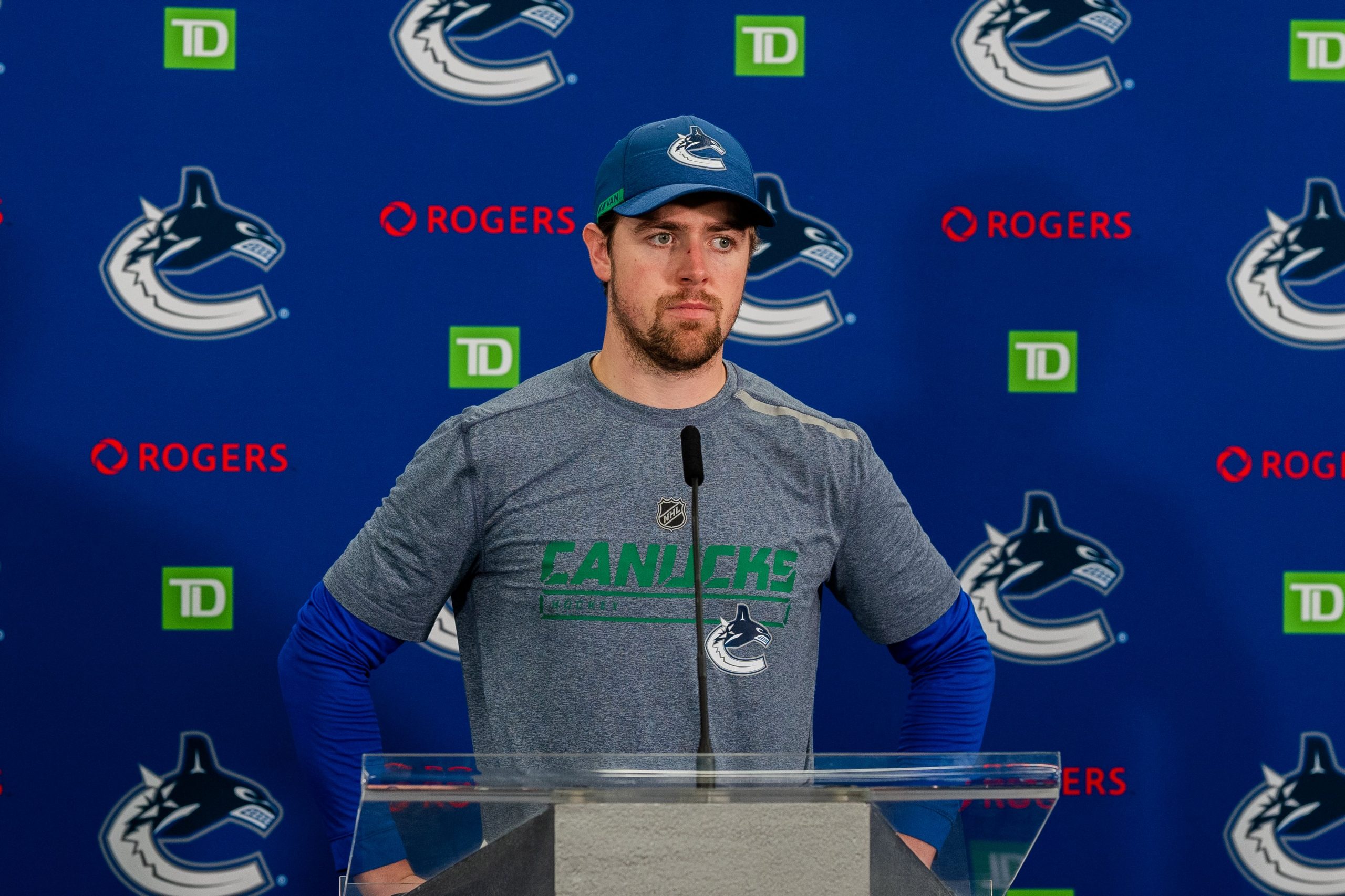NHL player development seems to always result in more questions than answers. How likely is it for a top pick to pan out? What makes a player a “steal”? Last Word On Hockey is starting a new series on how to properly develop prospects from all different spots throughout the draft. This week’s piece involves draft picks in the back half of the first round and how they were used early in their careers.
NHL Player Development Of First-Round Picks
In the span of 2005 through 2015, there were 84 total selections made between 16th overall and 30th overall on forwards playing in North America. Looking at all 84 forwards, they were split into different categories. Those categories were “Forwards Deemed NHL-Ready and Brought In Immediately When Ready,” “Forwards Near NHL-Ready and Brought In Immediately When Near-Ready,” “Forwards Rushed Slightly,” “Forwards Rushed,” “Forwards Forced,” “A Little Patience,” “Patience,” and “Too Much Patience.”
There were 13 forwards who fell into the third category on the list. Of those 13 players, six made their NHL impacts at or before their DY+3 season. Those six players are Tanner Pearson, Nick Schmaltz, Kerby Rychel, Jordan Eberle, Emerson Etem, and Scott Laughton. In this piece, we will look at Pearson and Schmaltz.
Tanner Pearson
Pearson, drafted 30th overall by the Los Angeles Kings in 2012, came out of the Barrie Colts organization in the OHL. In his DY-1 season, Pearson scored 15 goals and 27 assists for 42 points in 66 games, for 0.636 points per game. That ranked 52nd out of the 84 aforementioned forwards in DY-1 production. The following season, Pearson scored 37 goals and 54 assists for 91 points in 60 games, for 1.517 points per game. That ranked 11th out of 84 forwards in DY production.
After getting drafted, Pearson would leave the OHL and join the Kings’ AHL affiliates, Manchester Monarchs. In his rookie AHL season, Pearson would score 19 goals and 28 assists for 47 points in 64 games, for 0.734 points per game. That ranked 63rd out of 82 forwards still outside of the NHL in DY+1 production. After that AHL season, Pearson would get his NHL shot.
Professional Career
In his first professional season, Pearson would split between the AHL and NHL. Playing in 41 AHL games, he scored 17 goals and 15 assists for 32 points. Then, in the NHL, he would play 25 games, averaging 10:49 time on ice per game. In that relatively small role, Pearson would score three goals and seven points. That point production is not eye-opening. However, his underlying stats were not bad and showed promise. His even-strength offence goals above replacement (EVO) was a solid 1.1, while his even-strength defence goals above replacement (EVD) was a 0.5. Those aren’t bad for a rookie. Ultimately, his wins above replacement (WAR) and goals above replacement (GAR), which looks at all situations, were solid, at 0.6 and 3.2 respectively.
In his second season, Pearson would only play in the NHL. Albeit, he played just 42 games and averaged 13:18 per game. In that somewhat better role, he would score 12 goals and 16 points, a modest point total. With that, his EVO (4.5) was better. But, his EVD (-2.1) fell below replacement level. With the offensive improvement and defensive regression, his WAR (0.4) and GAR (2.1) would both drop a bit.
First Full Season: A Show Of Good Development
In his first truly full NHL season, he would play 79 games and average 14:28 per game. With more games and more ice time, Pearson went on to score 15 goals and 21 assists for 36 points. All of his analytics would greatly improve as well. His EVO (7.9) furthered improvement. Additionally, he was back over replacement level with his EVD (2.0). With the even-strength impact heightened, Pearson’s WAR (1.9) and GAR (9.8) were really strong.
Following that third season, in 2015-16, Pearson would play with the Kings for two and a half years. In that span, he scored 39 goals and 46 assists for 85 points in 162 games, before being dealt in the 2018-19 season to the Pittsburgh Penguins. There, he would play just 44 games, scoring nine goals and five assists for 14 points, before being dealt again that same season. This time, he ended up with the Vancouver Canucks, where he remains today. Playing 207 games with the Canucks, he scored 54 goals and 55 assists for 109 points.
“Obviously we want to win. Last year can’t happen again… (We) made some good moves. More depth that will help in the long run.”
🗣️ Tanner Pearson on this year’s team pic.twitter.com/zxF5NF7e9k
— Vancouver #Canucks (@Canucks) October 5, 2021
Pearson’s player development likely could have gone better. One more year in juniors likely would have helped. Additionally, in his first three seasons, he was essentially groomed into a third-line winger, and that’s what he turned out into becoming. But, he is still an impact NHLer, and that’s all he would have wished for.
Nick Schmaltz
Schmaltz, drafted 20th overall by the Chicago Blackhawks in 2014, came out of the Green Bay Gamblers organization of the USHL. In his DY-1 season, he scored 18 goals and 34 assists for 52 points in 64 USHL games, for 0.813 points per game. That ranked 39th out of those 84 forwards in DY-1 production. Following that season, he would play 55 games, and scored 18 goals and 45 assists for 63 points, for 1.146 points per game. That ranked 42nd among those same 84 forwards in DY production.
After getting drafted, Schmaltz would head to the University of North Dakota to play in the NCAA for two seasons. In his first season, he scored five goals and 21 assists for 26 points in 38 games, for 0.684 points per game. That ranked 69th out of 82 forwards in DY+1 production. He would follow that up with 11 goals and 35 assists for 46 points in 37 NCAA games, for 1.243 points per game. That ranked 17th out of 70 forwards still outside the NHL in DY+2 production. Following that second NCAA season, he would head to the NHL.
Professional Career
In his first season in the NHL, he would split between the NHL and AHL. In the AHL, he would play 12 games, scoring six goals and three assists for nine points. Meanwhile, in the NHL, he played 61 games and averaged 13:16 per game. In that decent role, he would score six goals and 22 assists for 28 points. His EVO (4.3) was solid, and his EVD (0.6) was not bad for a rookie. With that solid even-strength impact, his WAR (1.0) and GAR (5.6) were really good.
In his second season, Schmaltz would play exclusively in the NHL. Playing in 78 games, he would average 18:14 per game. In that really strong role, Schmaltz scored 21 goals and 31 assists for 52 points, a really strong stat line for a second-year player. His EVO (6.6) was much-improved, but his EVD (0.5) would fall slightly. His WAR (1.2) and GAR (6.2) would both match his EVO and improve a bit.
Year Three Trade Disrupts His Development
In his third NHL season, Schmaltz was traded halfway through to the Arizona Coyotes. In total, he played 40 games that season and averaged 17:50 per game. With that role, he would score seven goals and 18 assists for 25 points, a decline from year two. His analytics fell across the board as well. His EVO (1.6) fell a lot, while his EVD (-1.7) went below replacement level. With that step down at even-strength, his WAR (0.6) and GAR (3.3) both fell far from where they were in year two.
Since that third season, 2019-20, he has remained with the Coyotes. In the three seasons that followed 2019-20, he would score 44 goals and 92 assists for 136 points in 185 games, showing that same production from year two since joining the Coyotes. It’s clear that Schmaltz’s development went about as well as anyone could have asked. The Coyotes have a good player locked up for the next four seasons at a reasonable price.
Junior league stats via Elite Prospects, NHL stats via Hockey Reference, NHL analytics via Evolving Hockey






